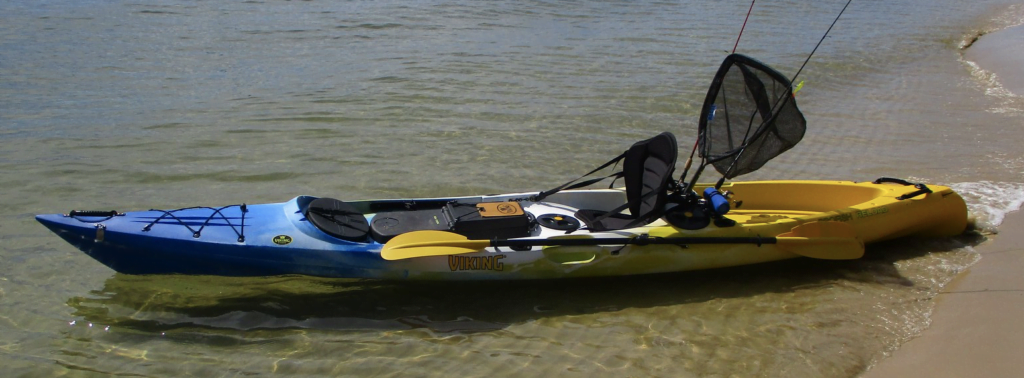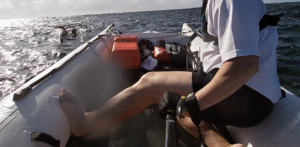So you want to go paddling in the ocean.....
Hi.. I’m Adam, and I own and run the Australian Watercraft Registry. If you’re in South East Queensland, hopefully you’ve either seen my weather reports, adverts, or the boat at races in Moreton Bay, or on the Gold or Sunshine Coasts, as the water safety boat.
After watching many races, it’s become clear to me that there are gaps in the way people paddle, the understanding of waves, tides and other ocean influences, and how paddlers manage these things to perform better. Also there are some simple principles about setting up your craft for it to be safer, easier to re-enter and just go faster.
The information provided is for you, and while I know a lot of people have come out of “beach” type clubs like the famous Australian restaurant business Surf Life Saving, I would like you to feel free to ask questions, but most of what I point out comes from my commercial vessel training, and is just here to help you.
Flat water river paddling.
If it’s not a race, just enjoy it and have fun. Keep in mind that if you’re paddling against the tide, cut corners where practical. The deepest water and the most flow is on the outside of a bend, and thus harder to paddle. I once saw a OC6 crew paddling behind a large power vessel thinking the are getting some kind of draft like NASCAR, thats not the case, you’re are actually paddling harder in to the thrust the vessel is putting out trying to move itself forward.
Surface tension. Surface tension is basically about the connectivity of molecules blah blah blah, but I bet all of you have seen a ball stop as soon as it hits a puddle? Water is a really dense liquid and it loves the surface of your kayak, SUP or Ski. While chemicals like detergent will remove surface tension, it will also wash off immediately. Silicone spray on the other hand will remove surface tension (drag in the water) and won’t wash off easily either. If I was in a race for competition, I would be spraying the underside of my hull and the top of the bow with Silicone spray. It’s available from Bunnings, car auto stores like Supercheap and Repco, and others.
Down Winding.
What is supposed to be an easy sled ride is often ruined by misinformation, the wrong craft choice, poor craft design, and lack of technique, sorry xoxo.
So now that you think I’m a bastard, let me explain.. please 
So I’m at a race, race is in progress from the Southport Seaway to almost the NSW border, reasonable seas. I’ve already travelled the course leaving Currumbin Creek earlier in the morning and there is about a 1m swell running with some chop. I’m heading south monitoring the safety of the paddlers and I’m near what is generally considered one of the top iron man competitors on the eastern seaboard. It’s really obvious he can’t ride the swell, obvious because A. it’s passing under him and B. I can see his ski rock forward, then back, lifting the bow as the wave passes below. Now this paddler can easily paddle on to a wave and ride it in to a beach, and he has top quality equipment. It’s not his fitness, cardio or muscle strength, or his equipment, it’s that he knows nothing of longitudinal stability, (among the length of his craft), and he has craft is set up wrong for the event.
IF A WAVE CAN NOT LIFT YOUR BOW, YOUR CRAFT WILL ACCELERATE FORWARD.
There it is, it’s that simple. On that day, the winner completed the course in 1hr 20 minutes. The waves did it in 45 minutes……. imagine a paddler flogging the rest of the paddlers by 30 minutes. If you learn what it takes to surf an average wave in the ocean, this could be you.
So, the pitfalls. In this scenario, having a carbon craft is not a key to being faster, as you’re not essentially paddling, what does matter is the level of buoyancy of you in your craft. It’s harder for me, I’m 194cm and 128Kg, based around the size they make skis and kayaks, I’m always going to be deeper in the water, but it’s based around principle, so it even applies to my fishing kayak.

One of the things people talk about “to sound cool” is the linking of “runners”. If there are runners I would say it’s not a down wind event, as I would refer runners to wind generated chop. What I refer here to is “swell”, waves that have travelled long distances and are over 1m high and have a longer wave length. No matter what wave your riding, the length of your craft has to be shorter than the wave length. If your 14ft race sup is longer than the wave length you would be better on a big fat surf SUP, because it it wont surf in the conditions, it’s the wrong craft and I don’t give a shit how much it’s worth. It’s based on principle.
The other thing I have a laugh about it paddlers talking about paddling up and over a wave in a down wind event… Thats B.S.
A 2m swell will travel at 20-23 knots (about 37Kmh), famous K1 Kayaker Lisa Carrington from NZ paddles flat out on flat water at 16kmh over 200m, if you think you can do better than 20kmh on a surf ski up hill over a wave you’re having a lend. If you can surf wave effectively, you’ll do a 18km course in 2m swell in under 30 minutes, and be showered and dry in a fresh set of clothes when the second place getter comes in to the beach.
Example.
So your 60 to 80kg, a capable paddler, race experienced and going in a down wind event. A wider, short craft would suit you better, rather than a long sleek craft, because remember, you’re not pulling yourself through the water, you’re being pushed by the waves. The Epic SLS10 or what is now the CTC Surfcraft, it’s a bit wider, has a flatter underside, has a nice buoyant bow if you do happen to nose dive in to the wave in front, and it’s shorter. One key point is that your rudder may not be effective because it’s on the crest of a wave. One thing you’ll need to learn is cutting across waves, your water speed will increase, your directional speed (to the finish line) will be the same.
More about craft selection.
In down wind races, I wrote earlier that you have to stop the wave from being able to lift your bow of your craft, which means where you sit in the craft plays a big part. I was talking to a beautiful, talented successful young lady about down wind racing in her ski, and I said “Look, I’ll pay for the race entry, I’ll pay you the race 1st place prize money if I’m wrong, but let me put 2Kg in ballast on the front of your ski and I guarantee you’ll win.” She thinks I’m an idiot. She didn’t win. Beach people playing in the ocean.
If you see the pictures of the AustWR Thundercat, you’ll see I put 25l of fuel up the front, or 2 x 6Kg kettle bells and sometimes an anchor. With out it, it’s a prick to drive, sailboats have a keel to oppose the force that drives it (wind) and I want you to have a balance of weight in your craft so that it performs in the manner it’s suppose to.
This means some kayaks that are manufactured are not suitable for down winding, because your weight is too far back, you can add weight to the front, or pick another craft. If I designed downwind skis. I would have a hatch in the front that you could add weight to depending on your size, weight, and proportion build legs versus torso.
Outriggers.
I do so much work with outrigger paddlers and they are such a wonderful community of caring people.
Craft, based around designs from the American island of Hawaii is the start of the problem. The waters around the volcanic islands of Hawaii are 2000 – 5000 metres deep, so the wave length is enormous. You bring the same craft to the Australian East coast and the water is 20 – 50 m deep and the wave length is much shorter and they don’t perform the same.
The foundation of the metric system.
1 litre of fresh water is 1 kilo which is 1000 cubic centimetres. So, 1 litre above sea level weighs 1 kilo, 1 litre of water in your kayak below sea level weighs nothing.
Those cork things with the breather pipe.
Yikes, I hate them, when I get a Epic V8, I’ll be swapping it out for a screw in plug, and I’ll fit a breather tube. In short, I’m 128Kg, or 280 pounds, even when I get fit and get down to 240 pounds that little plug hole is less than 1 square inch, so my fat arse is putting 240PSI against that little plug, and it’s a entry for water in to the hull, which will help it sink. No thank you. Design fault.

One of the concerning things for me is that people struggle to get back in to their craft. I experienced this first hand a couple of weeks ago offshore assisting a paddler. He wasn’t wearing his life jacket as it makes it harder to get back in, it also doesn’t stop you drowning. An easy fix if to have a rope tied from one Ama support to the other, hard up against the canoe. It has to be long enough that you can get your foot on to it and lift yourself up back in to the canoe. To stop it dragging in the water, buy some bungee cord and lash it to a section of the rope and tie it back to the rear Ama support. It wont be lose, it won’t be in the way when paddling, but it will be a stirrup to get back in when your arms are tired and not strong enough to get you back in to the craft.
Questions? feel free to shoot me an email or come see me at the next race. adam@austwr.com.au

